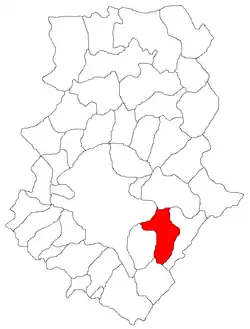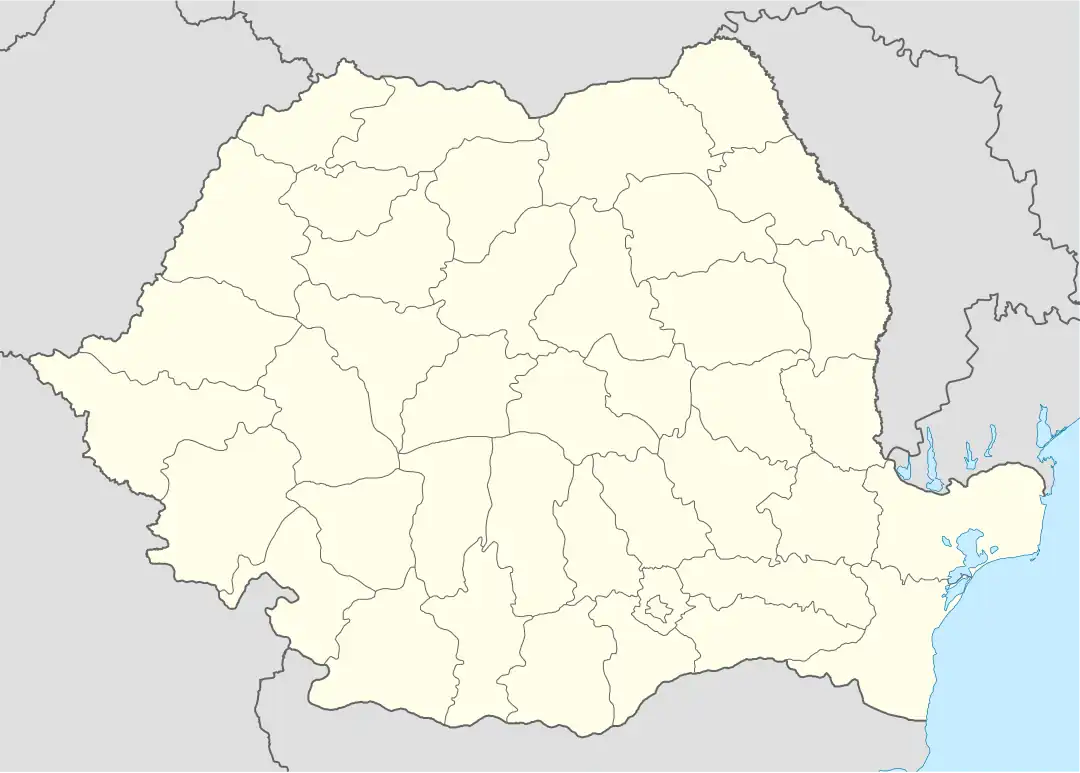Glina, Ilfov
Glina | |
|---|---|
.jpg) Battery 9–10 in Cățelu | |
 Location in Ilfov County | |
 Glina Location in Romania | |
| Coordinates: 44°23′N 26°15′E / 44.383°N 26.250°E | |
| Country | Romania |
| County | Ilfov |
| Government | |
| • Mayor (2020–2024) | Ionuț-Răzvan Tudor (PNL) |
Area | 28.87 km2 (11.15 sq mi) |
| Elevation | 67 m (220 ft) |
| Population (2021-12-01)[1] | 9,209 |
| • Density | 320/km2 (830/sq mi) |
| Time zone | EET/EEST (UTC+2/+3) |
| Postal code | 77105 |
| Area code | +40 x66 |
| Vehicle reg. | IF |
| Website | primaria-glina |
Glina is a commune in the south-east of Ilfov County, Muntenia, Romania. Its name is derived from Slavic Glina, meaning "clay". It is composed of three villages: Cățelu, Glina, and Manolache.
The commune is the site of the Glina sewage treatment plant.
Cățelu is the site of Battery 9–10, the best known – and most visited – former military fort from a defensive circle of fortifications surrounding Bucharest that was built in the late 19th century, during the reign of King Carol I.[2]
References
- ^ "Populaţia rezidentă după grupa de vârstă, pe județe și municipii, orașe, comune, la 1 decembrie 2021" (XLS). National Institute of Statistics.
- ^ Bergheș, Andrei (November 2012). "Forturile din București" (PDF). www.orasul.ro (in Romanian). Archived (PDF) from the original on June 15, 2021. Retrieved May 7, 2020.
